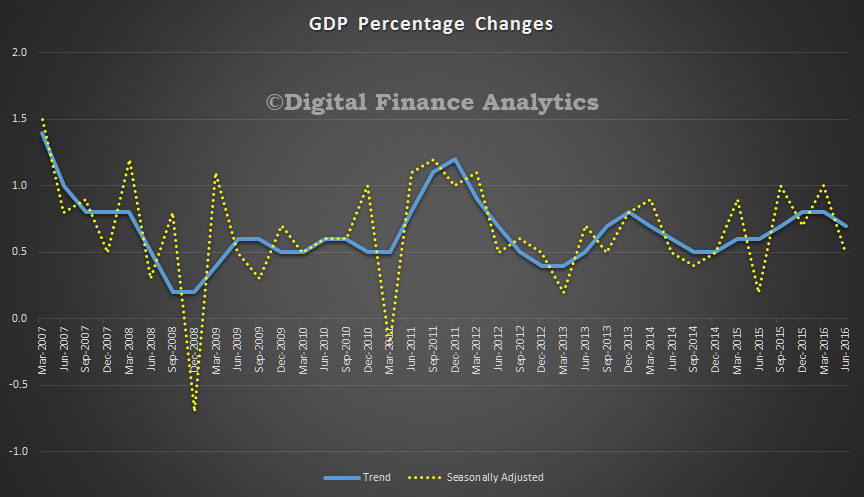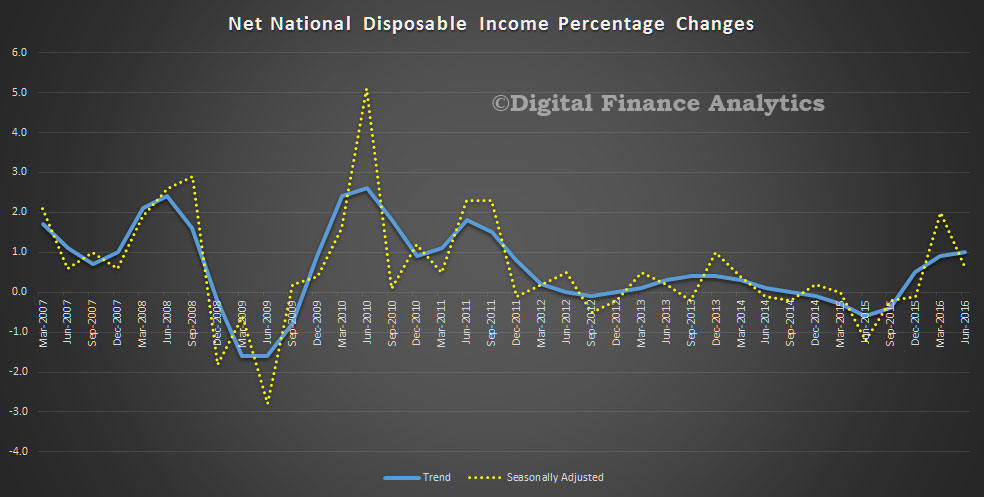Australia’s economic growth slowed in the June quarter. Data released by the Australian Bureau of Statistics (ABS) today show that Gross Domestic Product (GDP) grew 0.5 per cent in seasonally adjusted terms in the June quarter 2016, down on the growth of 1.0 per cent the economy experienced in the March quarter. GDP grew 3.3 per cent through the year bringing the annual growth for the 2015-16 financial year to 2.9 per cent.
In trend terms, which smooths out the series, growth fell again a little, with 0.7% growth in the quarter.
 Net National Disposable Income improved, thanks for household and public spending. However household spending is slipping as low wage growth, and high debts bite. Government investment is filling some of the vacuum created by the mining sector slow down.
Net National Disposable Income improved, thanks for household and public spending. However household spending is slipping as low wage growth, and high debts bite. Government investment is filling some of the vacuum created by the mining sector slow down.
The ABS says: GDP growth in the June quarter was driven by domestic final demand, which rose 0.6 per cent this quarter, supported by ongoing growth in household and public consumption. Total investment was flat in the quarter, with the continued reduction in engineering construction associated with the mining sector offset by growth in public investment.
International trade detracted from growth in the quarter due to strong growth in imports and a slowing in the rate of growth in exports. After strong growth in the March quarter, production in the mining industry was lower in seasonally adjusted terms in the June quarter.
Income growth was supported by an increase in profits of non-financial corporations associated with an improvement in Australia’s terms of trade. The terms of trade growth of 2.3 per cent in seasonally adjusted terms was the first increase since December 2013. Compensation of employees rose by a modest 0.5 per cent in the June quarter to be 3.1 per cent higher through the year. This is in line with the modest through the year growth observed in hours worked (0.7 per cent) and the Wage Price Index (2.1 per cent) previously published by the ABS.

